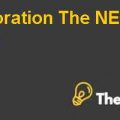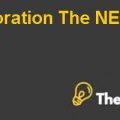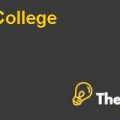
Introduction
NTT Docomo of Japan entered into a joint venture with Tata Tele services Ltd. in 2008. NTT was the market leader in Japan while TTSL was ranked fifth in the Indian market. The purpose of this new joint venture was to take advantage of the unique and strong abilities of each other and collaboration can develop them as a strong player. NTT Docomo was aiming to take advantage of the knowledge that TTSL had on the local market and the ownership of telecom license that is only offered to the top local firms in India. On the other hand, TTSL wanted to utilize the 3G technology in order to increase its market share in the growing market of India demanding this new trend. This new deal will provide both the companies many advantages, but before that, the companies have to deal with some issues regarding the deal.
The later portion of the paper will carry out problem diagnosis in detail. The problem diagnosis will focus primarily on the international business issues that have arisen and were present in the case. After diagnosing the problem, PEST analysis will be conducted to analyze the current situation of the Indian market as the company is seeking for a joint venture and the last portion will provide recommendations for dealing with these issues.
Problem Diagnosis
Indian telecom market and Japanese telecom market, differ a great deal on many points and catering the new market was a challenge. The point of differences was vital that included point of payment, subscription challenges and service offerings. Unlike Japan, companies in India offer low subscription charges and invest heavily on promotion to take advantage of this growing trend. Similarly, people in India were using the prepaid system, unlike Japan and the services offered were functional unlike Japan where the companies offer value added services.
NTT Docomo was offered a 26 % stake in the joint venture, and the company was under consideration whether the stock is justified or not and if not then what should be the appropriate stake NTT Docomo should have. The price set was also an issue as the company was paying 2.7 billion USD for a 26% stake, and that will increase the enterprise value of TTSL and will reach 10.38 billion USD. 3G was the technology that NTT Docomo will transfer to TTSL. The issue regarding this deal was that the company did not have sufficient knowledge to completely absorb this new technology as the country lacked in knowledge management.
These were the major business issues that the company was facing regarding this new deal with TTSL and was considering on to carry on this joint venture at the right price and right stake. The stake will leave the company aside from taking major decisions and the company wanted to convince the partners on two major things that were gaining veto rights and taking control of several important management positions and the company wanted to make the objectives of this new assignment clear to TTSL.
PEST Analysis
Political
The political environment is very stringent as foreign companies are not allowed to get a license for operating in India and a joint venture is the only source of entering the Indian market. Secondly, in a joint venture a foreign company is restricted to seek only 74% of the share and the major positions like Chairman and CEO are reserved for Indians only.
Economical
The GDP of the country is increasing and the new technology is getting hype very quickly. The major investments of TATA come from foreign investors. The unemployment rate is going down significantly.
Social
In India lifestyles are changing with a rapid pace and with the advancements in technology, communication has become easier as well as a necessity for people.
Technological
The technological environment is growing and the internet access has become faster. Trends like video calling, faster browsing and downloading are adapted quickly and use of mobile phones is increasing.
Recommendations
Since India is a different market than Japan and the preferences of the consumers are also different, but the growth of the market is immense so NTT Docomo should pursue the joint venture with TTSL. Currently, the company has been offered a 26% stake, but in order to take hold of the market and to explore the market, NTT Docomo should focus on acquiring a bigger stake. The reason that the company should focus on buying a bigger stake is that the country new to 3G technology and so is the company. The assimilation ability of the company of this new technology is not encouraging, so the NTT needs to take hold of the technology until the company is fully prepared to absorb it.................
This is just a sample partial case solution. Please place the order on the website to order your own originally done case solution.
In November 2008, NTT DoCoMo, the largest mobile phone company in Japan, has entered into a joint venture (JV) with Tata Tele Services Ltd (TTSL), the fifth largest mobile phone company in India. Two partners have come together because they both recognized that they can deliver additional features in the game. NTT DoCoMo may be based on knowledge of the local market TTSL and possession of telecommunications licenses (including the federal government's only domestic firms). TTSL may access the core competence in technology NTT DoCoMo 3G, which was soon to be launched in India through a spectrum auction. As part of signing the deal, the two partners had to deal with issues other than business interactions - as a percentage of the common stock of each of the partners in the joint venture, the price at which NTT DoCoMo buys stake should be relieved of TTSL and the right of veto, which can make for a minority holding. This study helps students understand the dynamics of the formation of international joint ventures. It also underlines the unique benefits of the joint venture compared to other forms of international cooperation, such as technology licensing and distribution agencies. "Hide
by Shi-Fen Chen, Ramasastry Chandrasekhar Source: Richard Ivey School of Business Foundation 20 pages. Publication Date: January 10, 2011. Prod. #: W10004-PDF-ENG













